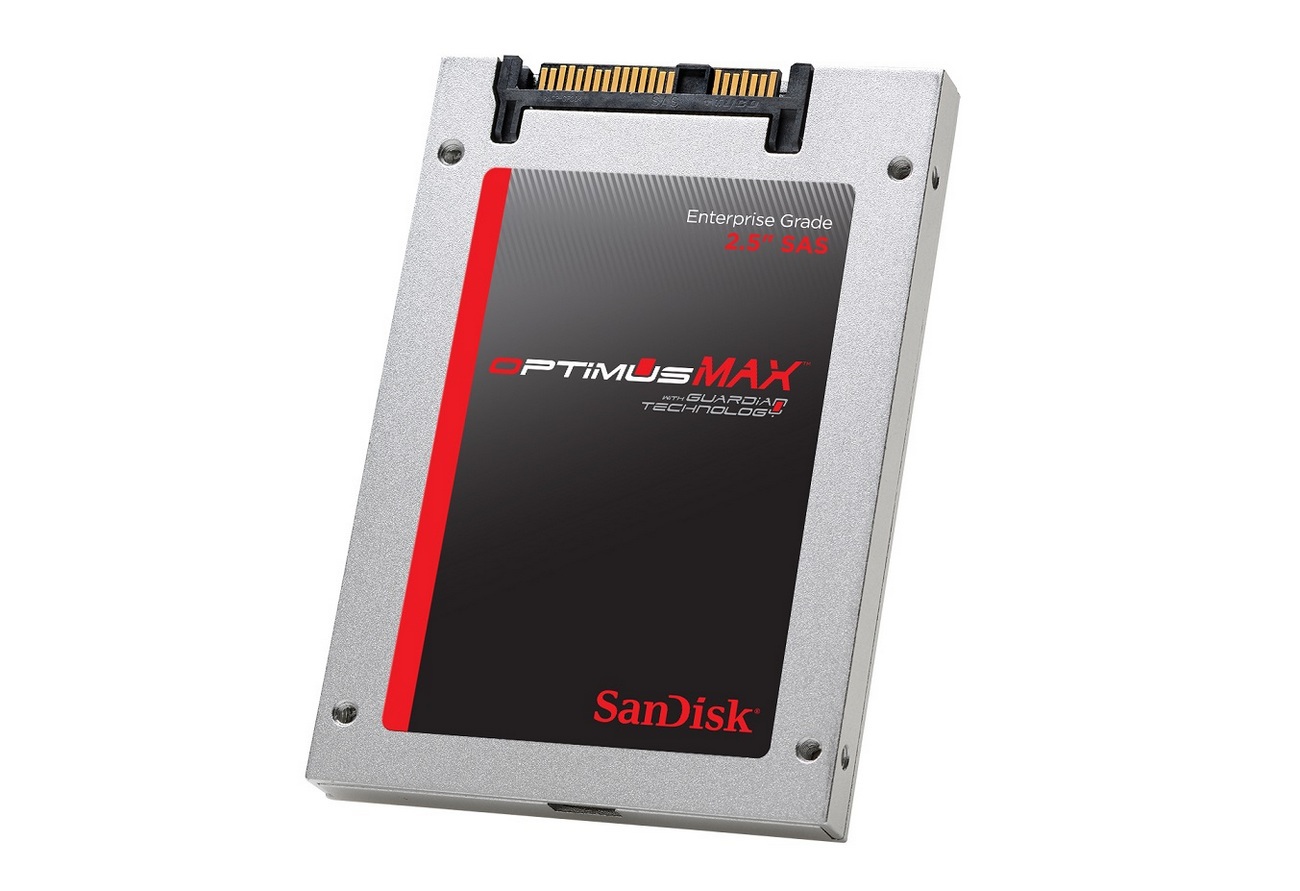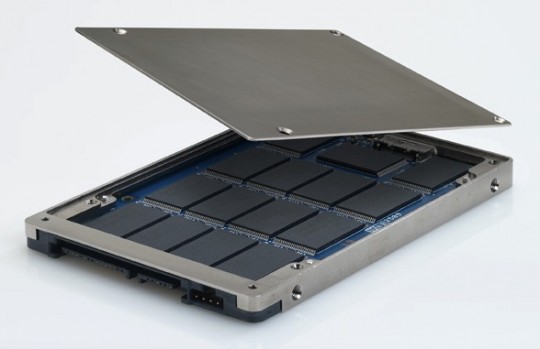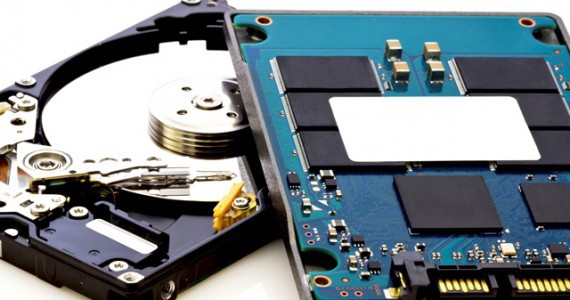SanDisk Announces First 4TB SSD Disk
The undoubted advantages of solid-state drives were and remain high performance and reliability, while in terms of cost and volume, they significantly lost to HDD-drives. But the ice has broken. On April 30, 2014, SanDisk announced the release of Optimus MAX, the industry's first 4TB solid-state drive. Thus, Optimus MAX SSD caught up in volume existing high-capacity HDD-drives, approaching the moment of complete transition of data centers to SSD technology.

The Optimus MAX model heads the updated Optimus SAS SSD family. For it will be used proprietary components of Guardian Technology based on MLC NAND flash memory, manufactured using 19-nanometer technology.

The platform is based on FlashGuard, DataGuard and EverGuard technologies that provide error detection and correction, data integrity protection and recovery in case of failures. For NAND chips, this minimizes the possibility of data corruption due to frequent reading on adjacent pages within the block. SanDisk claims the likelihood of an unrecoverable read error on new disks at a level of 1 to 10 ^ 17. TBW (Total Bytes Written, the total amount of data that can be written before the time between failures) of this model is 2176 TV.
The capacity of the drive reaches 70,000 IOPS on read operations and 15,000 IOPS on write operations at 4TB, making it a worthy replacement for SAS hard drives for data centers.
')
Most companies rely on 10K and 15K rpm SAS hard drives for mission critical applications because they provide high performance at a relatively low cost. However, since increasing data volumes and accessing real-time information is becoming increasingly important, the market comes to the conclusion that traditional hard drives cannot meet its requirements. The Optimus MAX SSD offers an efficient alternative, with high storage density and SSD-class performance, which allows enterprises to replace poorly performing hard drives using their current SAS-based storage infrastructures. With the Optimus MAX SSD, customers will be able to significantly reduce infrastructure maintenance costs by reducing energy consumption, heat dissipation, and the smaller size of the disks themselves, which reduces the physical space used.

The market has long been waiting for the opportunity to fully switch from HDDs to SSD. Initially, this transition was hampered by the extremely high price of solid-state disks. With the development of technology, the price declined, but the volume of disks is still significantly inferior. SanDisk company with its Optimus line, which had previously included 1.2, 1.6, 2 TB disks, gradually leveled this obstacle, catching up in HDD volume. From the ubiquitous transition to SSD separates only the still relatively high price. However, if manufacturing companies begin to gradually abandon the development of obsolete HDD technology in favor of SSD, the market will soon be ready for a widespread transition to the SSD era.

The Optimus MAX model heads the updated Optimus SAS SSD family. For it will be used proprietary components of Guardian Technology based on MLC NAND flash memory, manufactured using 19-nanometer technology.

The platform is based on FlashGuard, DataGuard and EverGuard technologies that provide error detection and correction, data integrity protection and recovery in case of failures. For NAND chips, this minimizes the possibility of data corruption due to frequent reading on adjacent pages within the block. SanDisk claims the likelihood of an unrecoverable read error on new disks at a level of 1 to 10 ^ 17. TBW (Total Bytes Written, the total amount of data that can be written before the time between failures) of this model is 2176 TV.
The capacity of the drive reaches 70,000 IOPS on read operations and 15,000 IOPS on write operations at 4TB, making it a worthy replacement for SAS hard drives for data centers.
')
Most companies rely on 10K and 15K rpm SAS hard drives for mission critical applications because they provide high performance at a relatively low cost. However, since increasing data volumes and accessing real-time information is becoming increasingly important, the market comes to the conclusion that traditional hard drives cannot meet its requirements. The Optimus MAX SSD offers an efficient alternative, with high storage density and SSD-class performance, which allows enterprises to replace poorly performing hard drives using their current SAS-based storage infrastructures. With the Optimus MAX SSD, customers will be able to significantly reduce infrastructure maintenance costs by reducing energy consumption, heat dissipation, and the smaller size of the disks themselves, which reduces the physical space used.

The market has long been waiting for the opportunity to fully switch from HDDs to SSD. Initially, this transition was hampered by the extremely high price of solid-state disks. With the development of technology, the price declined, but the volume of disks is still significantly inferior. SanDisk company with its Optimus line, which had previously included 1.2, 1.6, 2 TB disks, gradually leveled this obstacle, catching up in HDD volume. From the ubiquitous transition to SSD separates only the still relatively high price. However, if manufacturing companies begin to gradually abandon the development of obsolete HDD technology in favor of SSD, the market will soon be ready for a widespread transition to the SSD era.
Source: https://habr.com/ru/post/225451/
All Articles